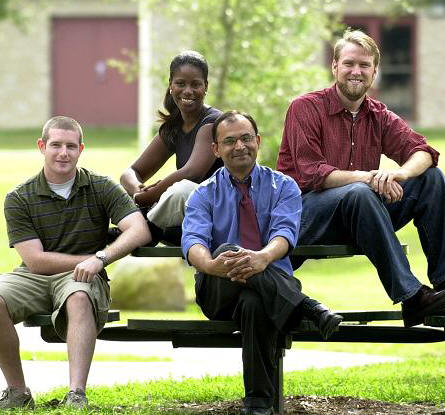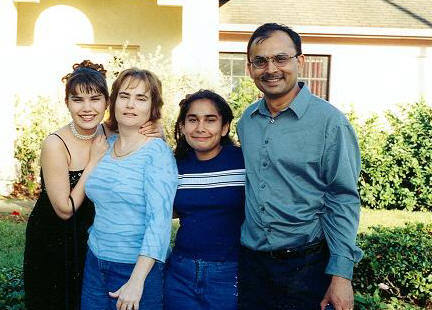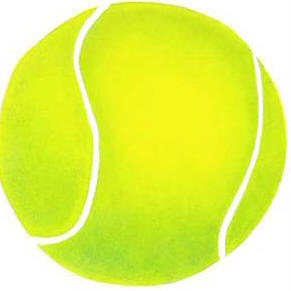 Please tell us a little something about your time at BITS
Pilani
Please tell us a little something about your time at BITS
Pilani
I joined BITS in
1976. Having never gone out of my state (J&K), it
was quite a change for me. However, about twenty of
my batch mates from high school and pre-college were
there which certainly made the transition a lot
smoother. I loved the Pilani experience as I learnt
to be independent and also achieved my initial goal
of becoming an Engineer.
I ran away to Delhi
the first two Saturdays I was in Pilani, where my
mother was visiting her brother, however, both times
she sent me back and I am glad to this day that she
did else who knows how things would have turned
out. Even showing her the big thick calculus book
by Thomas did not change her mind!
I eventually went on
to graduate with a BE (Hons.) in Mechanical
Engineering in ’81.
We’d
love to hear about what you enjoyed doing at Pilani.
Any special, particularly memorable moments?
I
loved to play BITS-style cricket with a tennis ball
and our study chair. It was fun to participate in
the tournaments. I also participated in cultural
activities like Bhawans nights and in my fourth year
was the Cul Sec of Ashok Bhawan.
The courses I liked
were the math courses. In fact, the staple course I
like to teach at University of
South Florida is Numerical
Methods for Engineers. If someone were to ask me to
pick a course I liked, it would be Optimization
Technology as I enjoyed its applications.

What are the three best memories of your time at Pilani?
Most of my memories
of Pilani are linked to OASIS. I was always
impressed by the organizational skills of BITSians.
I enjoyed the concerts of Hemant Kumar, Shiv Kumar
and Ravi Shankar.
I also remember the
farewell dinner for the seniors of Mechanical
Engineering. It was touching to see people’s eyes
moisten as they left but a sparkle at having taking
their first step – to make the transition to the US
or join India’s corporate world. It was one of the
few occasions when faculty and students mingled
freely without any kind of formality or reference to
rank.
Another memory that
is close to my heart is the bicycling trip (I forget
the place, it has a power station) about 50 miles
away. About ten of us went on this trip and our
bonds of friendship grew stronger than ever. To be
able to rough it out outside the comfort of our
hostel rooms was the learning experience of a
lifetime, not to say that, on occasion, living in
hostels rooms wasn’t roughing it out!
Tell us a little about the transition you made from India
to the US? What surprised you? What did you like
the most and what did you like the least?
I’ve loved neon
lights since childhood. To see so many neon lights
at night just made my day. Everything [in the US]
had a functional system which was refreshing. You
did not get shoved from one department to another
when you tried to get things done. Getting used to
the food here took quite some time.
My mother asked me
for just for two promises – do not eat beef and do
not marry an American. I ate beef, by mistake,
right when I boarded the PanAm Airline in Delhi. I
did not know non-veg meant beef, and I’m sure we
hadn’t left Indian airspace yet. As for the second
promise, it took four years to break that.
I did not dislike
much about US. I did experience a little
homesickness being cash strapped and the racist
remarks in the Dixie land of South Carolina. Also, I did
not like being dependent on others for car-rides.
What surprised me was
that people smiled at you all the time. I was
cautioned that just because a girl smiles at you
doesn’t imply that she is in love with you.
Please tell us a bit about your research. What attracted your
intellectual interest?
Over the last
twenty-three years, I have conducted research in the
fracture mechanics of composite materials, bridge
design, and educational research. I have always
been interested in applied mathematics. The
research in fracture mechanics of composite
materials was interesting, as at that time not much
was known about how composite materials behave. It
also involved two of my favorite subjects – advanced
mathematics and scientific programming.
The research in
bridge design happened just by chance when a
colleague of mine and I were asked by the Florida
Department of Transportation to look at failure
during the assembly of the fulcrum of bascule
bridges in Florida. In contrast to my earlier
research that was basic, this one had immediate
application. Also, it involved analytical,
numerical and experimental components, and hence
made it a complete study.
More recently, I have
developed a holistic website for a course in
Numerical Methods. This resource has been quite
successful where the website has more than 5000
unique visitors per month.
Have you written or planned any books?
I have
written one book on “Mechanics of Composite
Materials”. It was published in 1997 and the second
edition is due to be published in 2005. I have
co-authored a book on Fundamentals of Engineering
Examination, and also an E-book on Introduction to
Matrix Algebra.
The
CASE award is predicated on "extraordinary
dedication to undergraduate teaching" and we
understand that you have been exemplary
in the integration of technology and real world
problems into the teaching process. Please tell us
more about this.
This award has mainly
recognized the effort in developing the web-based
resources for an undergraduate course in Numerical
Methods. For several years, I have incorporated
technology as a complementary tool in the classroom,
and when the National Science Foundation (NSF)
agreed to fund this effort in 2002, we were able to
expedite the execution. I have found that students
get highly motivated when they see real-life
applications in their courses.
Therefore, we use
real-life examples to show the need to learn
numerical methods. We also encompass several majors
of engineering so that students get exposed to
majors other than their own. With new technologies
being interdisciplinary, this is a unique
opportunity to introduce them to a wide variety of
applications.
Have you ever worked with students from BITS, Pilani? What
are your impressions of them in terms of research
skills or intellectual abilities? How do you think
we are distinguishing ourselves? What do we need to
be doing better?
I have worked
directly with only one student from Pilani, and he
was bright, as expected. We worked on
characterizing composite materials for a project
that was funded by the Air Force Office of
Scientific Research. Although a far cry from his
training, he now manages the Enterprise Solutions
for Wipro for the East Coast of USA.
The research and
intellectual ability of BITS students is
extraordinary. The holistic education we receive
[at Pilani] and the core courses that all students
take pays off in the long run. It allows us to
acclimatize to new technologies rapidly without
having to formally re-educate ourselves.
The only thing I can
think of doing better is that the laboratory
experience needs to be modern and emphasized more.
Hands on projects are necessary to develop good
engineering skills.
What do you think are the biggest challenges facing BITS
today?
Being
accessible to the children of the lower middle
class. BITS, in my opinion, has become very
inaccessible to meritorious students who cannot
afford the high fees and living costs. I would not
have been able to go to BITS if it was not for the
low cost education in 1976.
What can BITSians do better/start doing to compete with
the world’s best?
Hire the best
professors who are given the opportunity to conduct
research at the national level. Make an effort to
admit a diverse student body.
What role do you see the alumni playing in making BITS a
world-class institution?
BITS alumni
have already shown that they come from a world-class
institution. I would like to see more of the
academic alumni going back for a sabbatical and
sharing their educational and research experience
with their peers and students.
Have you been back to Pilani since? How was the visit
personally and professionally?
No, I have
not been back to Pilani but would love to do so one
day. Every one of my friends who has visited Pilani
has found their visit to be an emotional and
nostalgic experience.
What do you read to stay in touch with technology,
business and other fields that interest you?
I read
several magazines such as the Time, Reader’s Digest,
Popular Science, and the Smithsonian. I am a Fellow
of the American Society of Mechanical Engineers and
a member of the American Society of Engineering
Education. I read several technical journals
regularly in the field of composites, engineering
mechanics, and computers in education.
What
are your hobbies, interests etc.?
In my younger
days, I played quite a bit of racquetball and
cricket. However, with one’s knees not co-operating
now sometimes, I like outdoor biking. I love
reading nonfiction (it keeps me away from the
fiction; that is the only digital divide I have with
my wife) and going to the movies. I also like to
socialize with my friends. I occasionally write
articles for newspapers.
What
career/personal advice would you give the student
community?
Do what you
love, not what comes easy to you. I could be very
good at counting money at the bank but that would be
boring. Many a times, people will say that you are
good in science and math, so go become an engineer.
That is a wrong piece of advice anyone can give
you. I have instilled this in my own students and
also my two daughters. One of them is planning to
be a journalist while the other wants to design
large stages, a far cry from engineering. I am glad
that they get their genes as well as their looks
from their mother.

